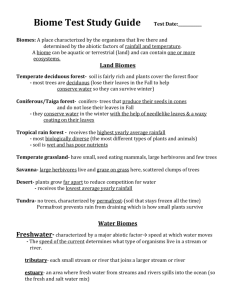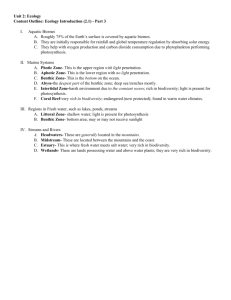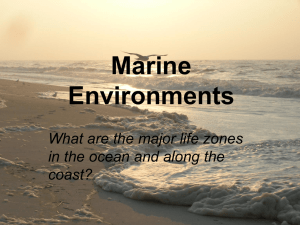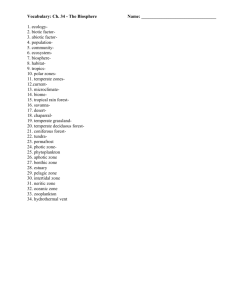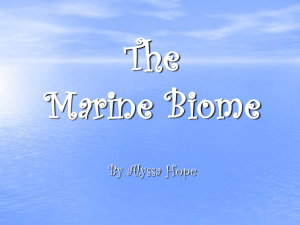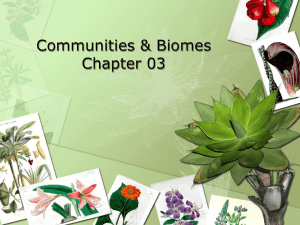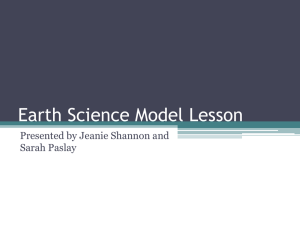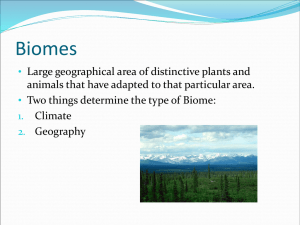biome
advertisement
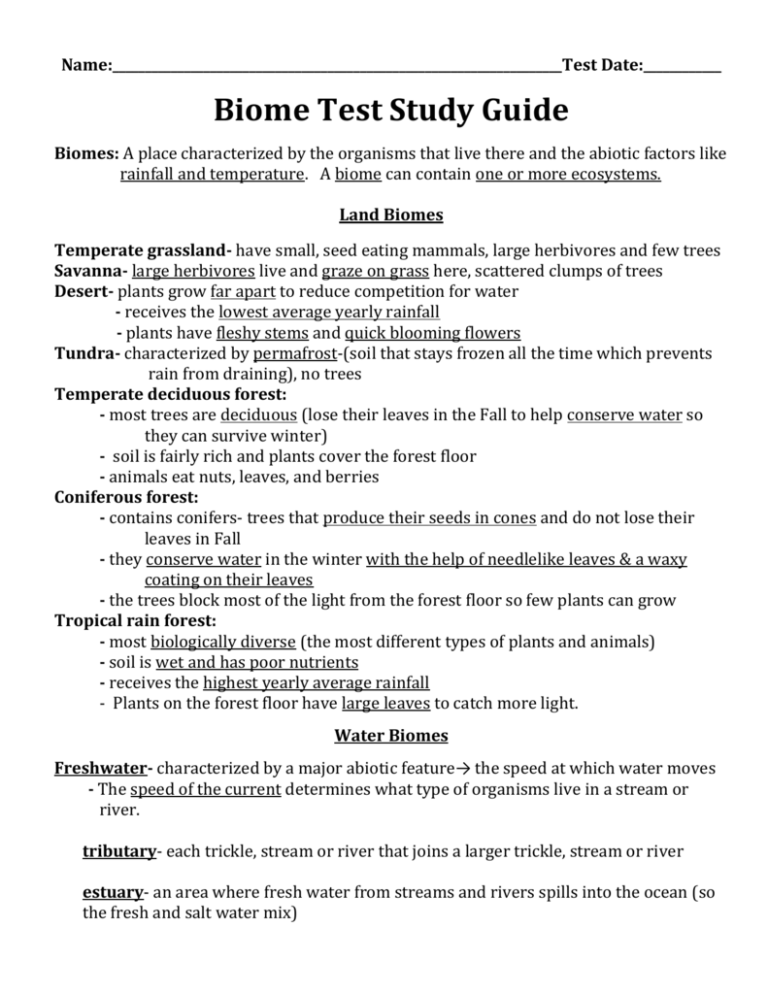
Name:_____________________________________________________________________Test Date:____________ Biome Test Study Guide Biomes: A place characterized by the organisms that live there and the abiotic factors like rainfall and temperature. A biome can contain one or more ecosystems. Land Biomes Temperate grassland- have small, seed eating mammals, large herbivores and few trees Savanna- large herbivores live and graze on grass here, scattered clumps of trees Desert- plants grow far apart to reduce competition for water - receives the lowest average yearly rainfall - plants have fleshy stems and quick blooming flowers Tundra- characterized by permafrost-(soil that stays frozen all the time which prevents rain from draining), no trees Temperate deciduous forest: - most trees are deciduous (lose their leaves in the Fall to help conserve water so they can survive winter) - soil is fairly rich and plants cover the forest floor - animals eat nuts, leaves, and berries Coniferous forest: - contains conifers- trees that produce their seeds in cones and do not lose their leaves in Fall - they conserve water in the winter with the help of needlelike leaves & a waxy coating on their leaves - the trees block most of the light from the forest floor so few plants can grow Tropical rain forest: - most biologically diverse (the most different types of plants and animals) - soil is wet and has poor nutrients - receives the highest yearly average rainfall - Plants on the forest floor have large leaves to catch more light. Water Biomes Freshwater- characterized by a major abiotic feature→ the speed at which water moves - The speed of the current determines what type of organisms live in a stream or river. tributary- each trickle, stream or river that joins a larger trickle, stream or river estuary- an area where fresh water from streams and rivers spills into the ocean (so the fresh and salt water mix) wetland- an area of land where the water level is near or above the surface of the ground for most of the year. This area is plentiful in nutrients so it has many varied plants and a large capacity for photosynthesis. swamp- type of wetland characterized by flooded trees draped with Spanish moss and vines marsh- a treeless wetland ecosystem where plants such as cattails and rushes grow Freshwater Zones - be able to label the zones in a picture of a freshwater biome Littoral zone- area where the water meets the land Open-water zone- extends from the point where water meets the land across the top of the water Deep-water zone- part of the water where no light reaches and organisms feed on dead organic material Marine- Marine biomes are based in salty water and contain the largest organisms in the world. Phytoplankton are very small photosynthetic plant-like protists that float near the surface of the ocean. (Phytoplankton are producers.) Zooplankton are very small animal-like protists (protozoa) that live in the ocean and eat phytoplankton (Zooplankton are 1st level consumers.) Marine biomes at the poles contain ice. Marine Zones- be able to label the zones in a picture of a marine biome Intertidal zone- area where ocean meets the land - sea grasses, periwinkle snails & birds live here Neritic zone- area where water becomes gradually deeper on the edge of the continental shelf - you can find seaweeds, coral reefs, sea turtles, and dolphins living here - Coral reefs are structures that are formed as a result of a long term build-up of coral skeletons. Oceanic zone- extends across the ocean waters, and down about 200m - whales, squid and animals adapted to darkness & high pressure live here Benthic zone- the sea floor, most areas do not receive sunlight - worms, sea urchins and bacteria live here - extends from the bottom of the intertidal zone to the bottom of the deepest ocean floors.
